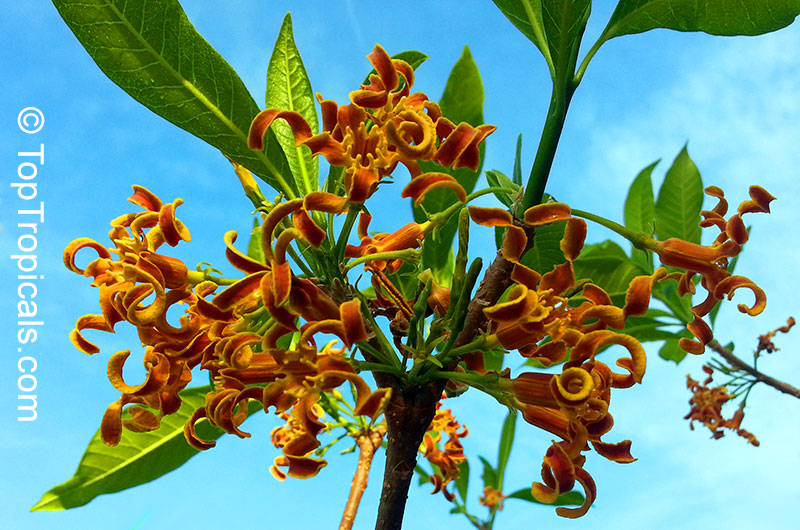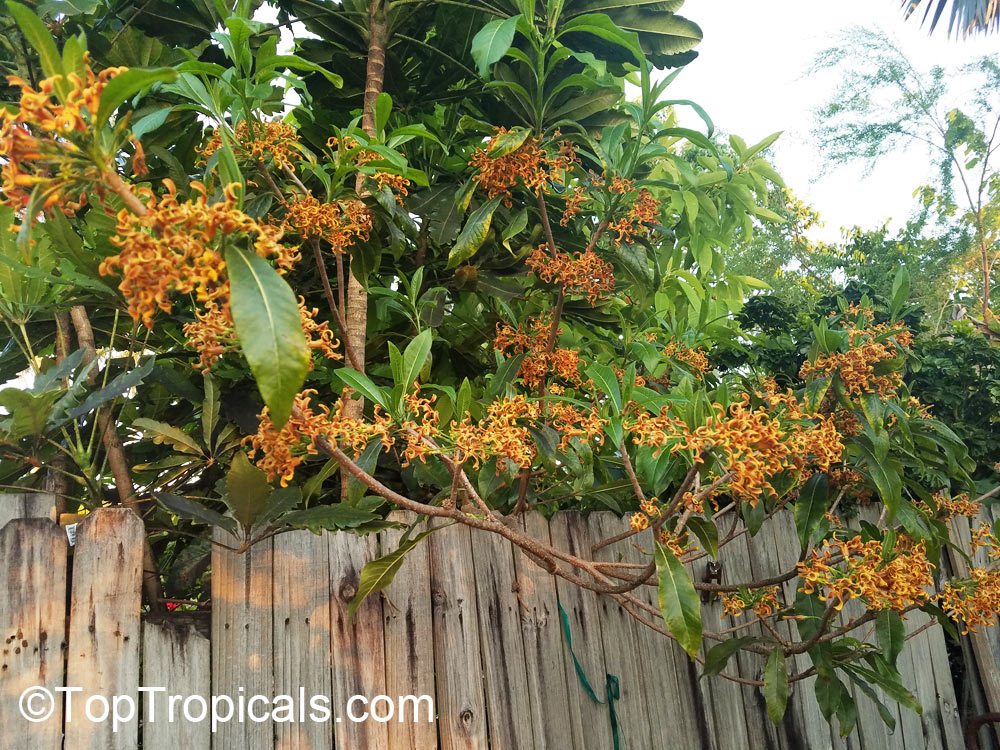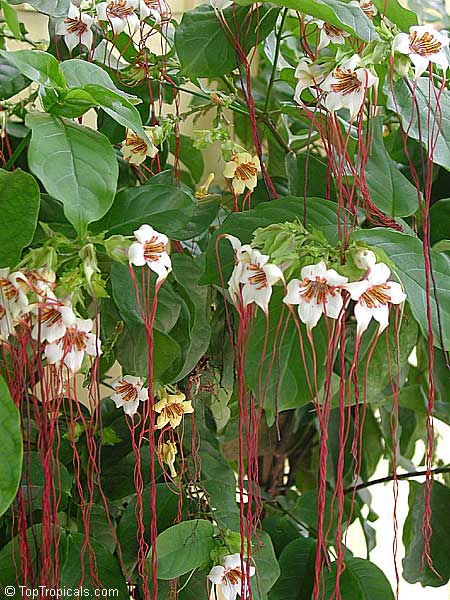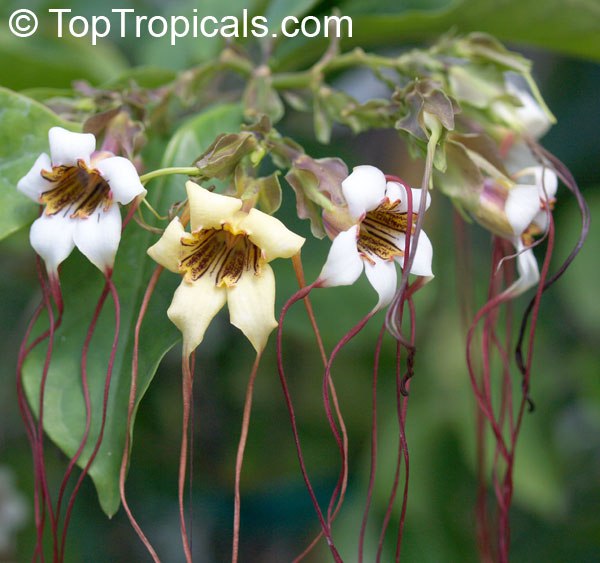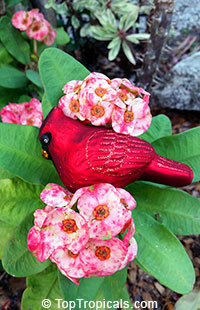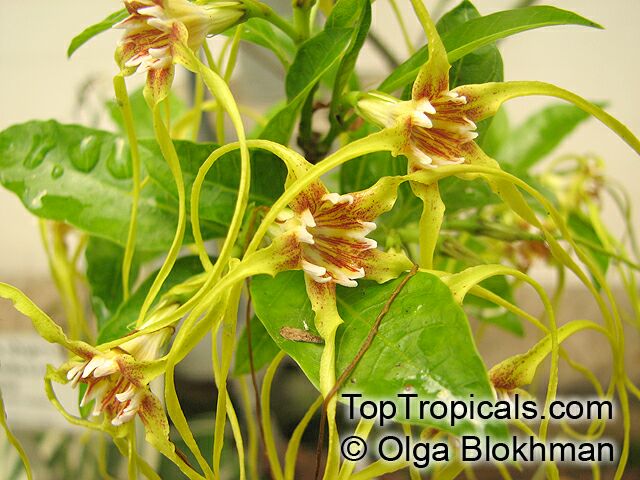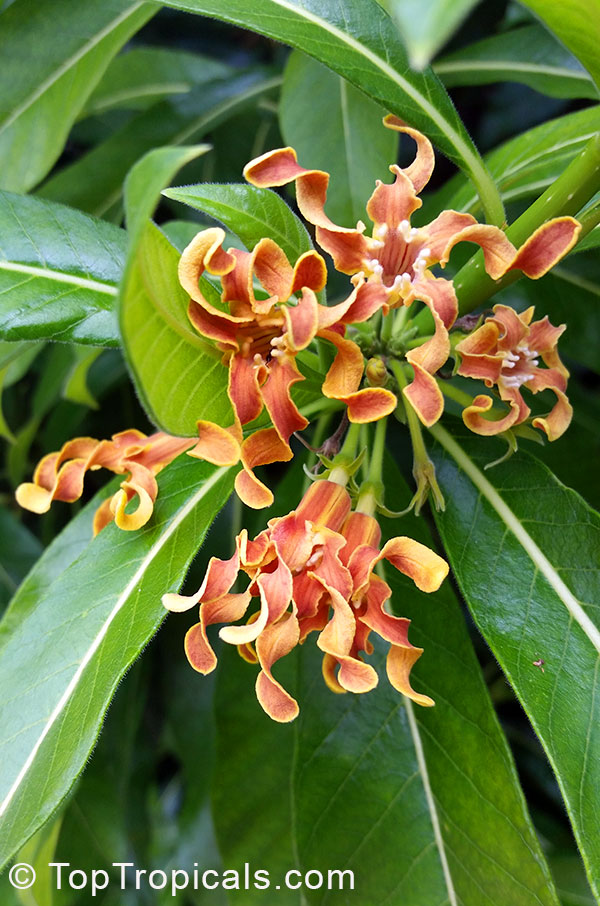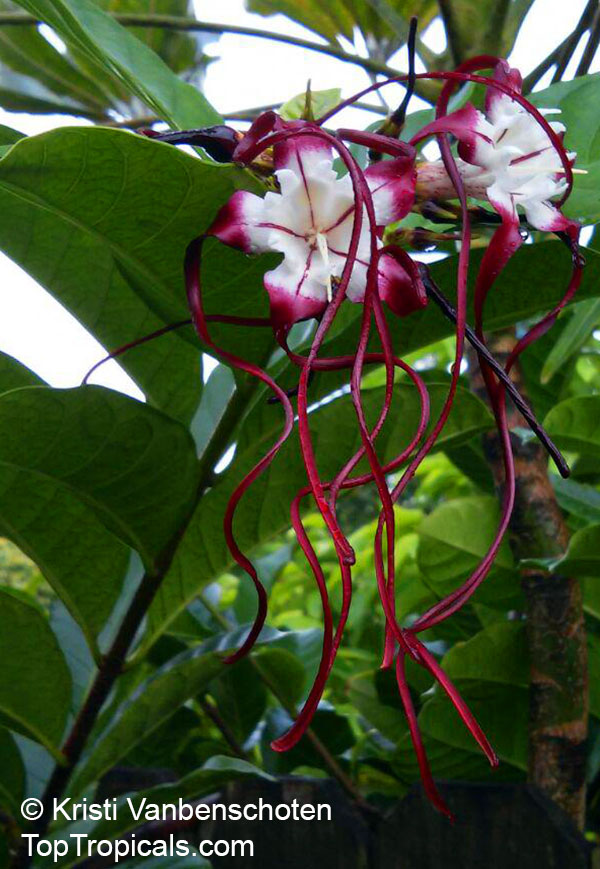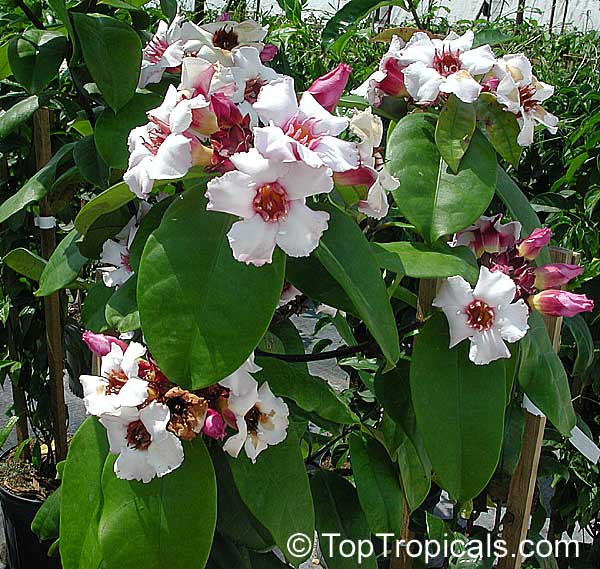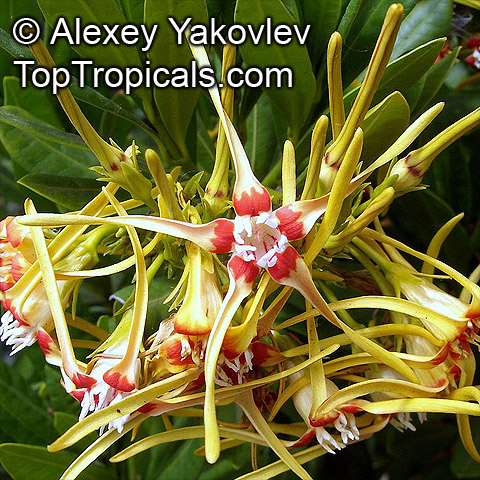Detailed plant profiles: 7 plants found
Strophanthus sp.
Family:Apocynaceae
Strophanthus










These frost-tender plants prefer a protected, part-shaded position and fertile, humus-rich, moist but well-drained soil.
Exotic species of Strophanthus:
Strophanthus caudatus
Strophanthus hispidus
Strophanthus kombe
Strophanthus petersianus - Sand Forest Poison Rope, scrambling shrub, creamy white flowers, pinkish red on outside, dangling petal lobes.
Strophanthus wallichii
See detailed plant profile in new window:
https://toptropicals.com/catalog/uid/strophanthus_sp.htm
Strophanthus wallichii
Family:Apocynaceae
Strophanthus




 Strophanthus wallichii
Strophanthus wallichii is a perennial vine or creeper, native to Indian subcontinent. It is an ethnomedical plant, commonly used in traditional medicine in India. The plant has long, dark green leaves and its bark is light red-brown in color. The bright red and crimson, vinous flowers sprout from the twig ends of the vines in February-March.
This plant is best suited to growing in a pot and prefers a sunny or semi-shaded position. It grows very well in USDA Zone 9-11. It is a fairly drought-tolerant plant but regular watering is recommended during the summer months.
If you are growing Strophanthus wallichii in a pot in a region where the temperature falls to low levels, then it is important to take extra care when caring for the plant. Make sure the pot has adequate drainage, as this will help in keeping the root system of the plant protected in cold weather. When the temperature falls below 40Fs, it is important to provide some protection to the plant by moving it to a location with better protection from cold winds.
Regular pruning of the plant is recommended not just to ensure optimal growth, but also to help keep the size of the vine from becoming too large. Strophanthus wallichii responds well to fertilizer, so it is recommended to give the plant a dose of fertilizer every 3 months or so.
Overall, Strophanthus wallichii is a beautiful and rewarding plant to have in your garden. With the right care, it will bring its vibrant red, crimson and vinous flowers to life and help create a stunning display in your garden.
See detailed plant profile in new window: https://toptropicals.com/catalog/uid/strophanthus_wallichii.htm
Strophanthus boivinii
Family:Apocynaceae
Wood Shaving Flower









See detailed plant profile in new window:
https://toptropicals.com/catalog/uid/strophanthus_bovinii.htm
Strophanthus caudatus, Echites caudatus, Strophanthus dichotomus
Family:Apocynaceae
Medusa Gorgona, Red Rapunzel, Twisted Cord Flower






Strophanthus caudatus (Medusa Gorgona) needs full sun or semi-shade and regular water to thrive. It is cold hardy and can survive temperatures as low as 30F for a short period of time, making it a great choice for gardeners growing in USDA Zone 9-10. For colder regions, it can be grown in a pot and brought indoors during extreme cold spells.
The tropical beauty of Strophanthus caudatus (Medusa Gorgona) is worth the extra care it needs to keep it looking healthy. With its showy flowers, unique foliage, and cold hardiness, this is a great choice for gardeners looking for an exotic and vibrant addition to their garden. For best results, provide a rich, well-draining soil in full sun or semi-shade, and water regularly. Fertilize once a month during the growing season and trim occasionally to remove dead or damaged branches. If grown in a pot, make sure the container is large enough for the shrub and provide regular water. During cold winter months, move the pot indoors or provide more protection from cold temperatures. With a bit of love and care, this tropical Asian beauty will lend an element of exotic flair to your garden.
See detailed plant profile in new window:
https://toptropicals.com/catalog/uid/strophanthus_caudatus.htm
Strophanthus gratus
Family:Apocynaceae
Climbing oleander, Cream Fruit, Rose allamanda








 Strophanthus gratus
Strophanthus gratus (Climbing oleander) is a fast-growing vine or creeper that is native to West Africa. Grown in USDA Zones 9-11, it requires full sun to semi-shade, regular water and prefers a fertile, humus-rich soil with good drainage. The pink flowers are especially attractive to butterflies and hummingbirds, and boast a wonderfully fragrant scent. The flowers add texture to the gardens and create a stunning display.
In cold regions it is important to take precautions when growing Strophanthus gratus in a pot. The mature plant is cold hardy to at least to 30s F for a short period of time. However, if in doubt, it's best to move the potted plant inside during freezes.
With proper care and attention, Strophanthus gratus will be an attractive addition to your garden.
See detailed plant profile in new window: https://toptropicals.com/catalog/uid/strophanthus_gratus.htm
Strophanthus preussii
Family:Apocynaceae
Medusa-Flower, Poison Arrow Vine, Spider Tresses, Poison Dart Vine










For those growing Medusa-Flower plants in a pot or container in cold regions, the plants need to be placed in a sheltered area, such as a porch or conservatory and supplied with extra mulch and insulation during the winter months. Furthermore, the container must provide sufficient drainage and be placed in semi-shade to protect roots from direct sunlight, especially during extreme temperatures. Regular watering is also key, but one should make sure to not over-water the plant or leave waterlogged soil in the pot. Also, feeding the Medusa-Flower is essential and can be done either prior to or shortly after flowering season.
See detailed plant profile in new window:
https://toptropicals.com/catalog/uid/strophanthus_preussii.htm
Strophanthus speciosus
Family:Apocynaceae
Corkscrew Flower, Forest Poison Rope, Forest Tail Flower










See detailed plant profile in new window:
https://toptropicals.com/catalog/uid/strophanthus_speciosus.htm
Detailed plant profiles: 7 plants found 










